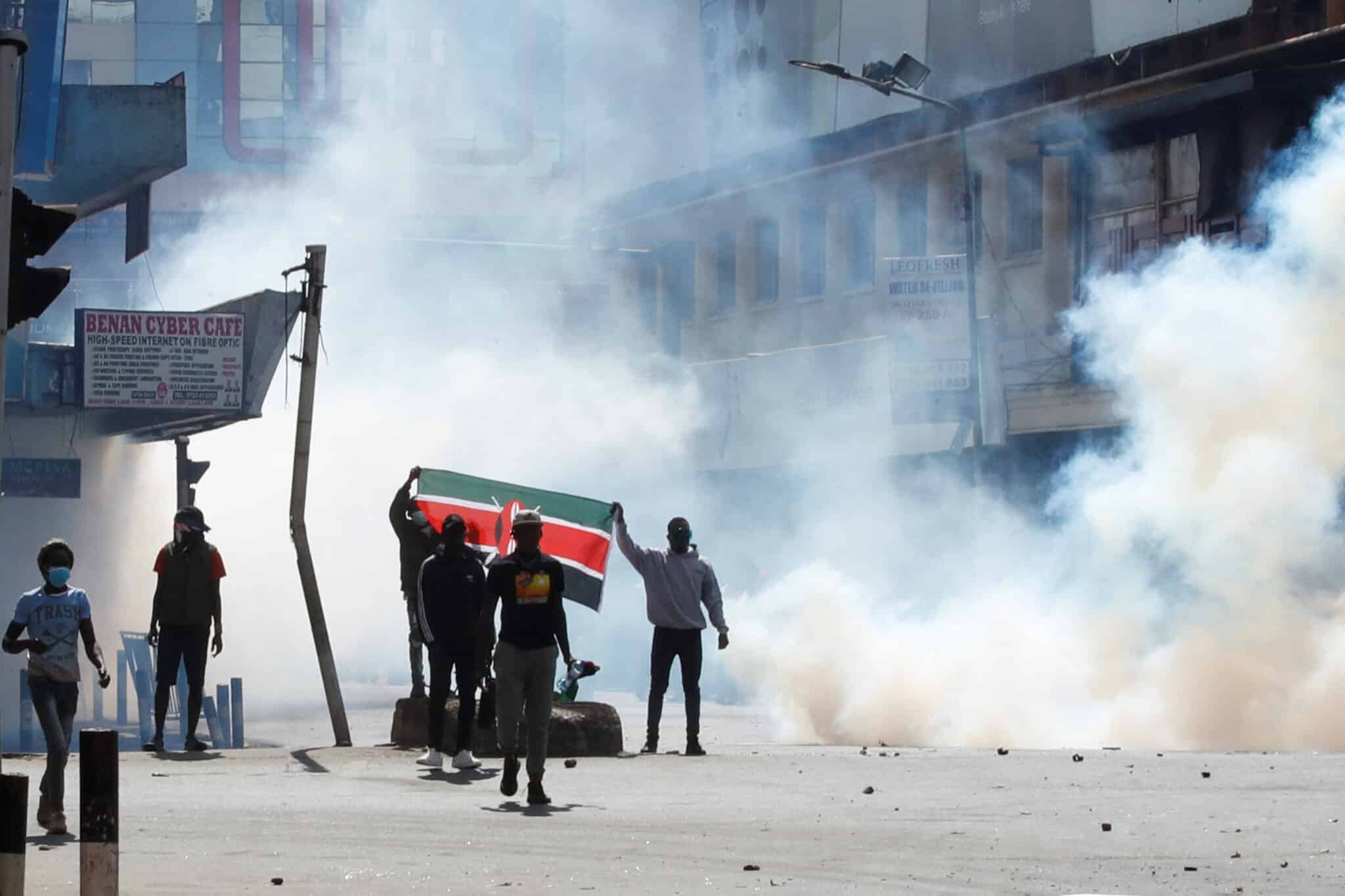
NAIROBI, June 27 (Reuters) – Kenyan police put up roadblocks on streets leading to the presidential palace on Thursday as some protesters vowed to “occupy State House”, despite the president’s climbdown on proposed tax hikes that sparked a week of demonstrations.
It was not clear how far protesters would be mollified by President William Ruto’s Wednesday decision to withdraw the finance bill, a day after clashes killed at least 23 people and parliament was briefly stormed and set alight.
Ruto is grappling with the most serious crisis of his two-year-old presidency as the youth-led protest movement has grown rapidly from online condemnations of the tax hikes into mass rallies demanding a political overhaul.
Lacking a formal leadership structure, however, protest supporters were divided on how far to carry the demonstrations.
“Let’s not be foolish as we fight for a better Kenya,” Boniface Mwangi, a prominent social justice activist, said in an Instagram post.
He voiced support for demonstrations on Thursday but opposed calls to invade State House, the president’s formal offices and residence, a move that he said could spur more violence and be used to justify a crackdown.
In the capital, Nairobi, police and soldiers patrolled the streets on Thursday and blocked access to the State House.
Police fired teargas to disperse several dozen people who had gathered in the centre of the city, although the crowds were nowhere near the size of those in Tuesday’s mass protests.
Reuters reporters saw army vehicles on the streets after the government deployed the military to help police.
Hundreds of protesters gathered in the port city of Mombasa and in the western city of Kisumu, local television footage showed, although those gatherings appeared peaceful.
While some protest supporters said they would not demonstrate on Thursday as the finance bill had been scrapped, others pledged to press on, saying only Ruto’s resignation would satisfy them.
“Right now is not about just the finance bill but about #RutoMustGo,” political activist and protester Davis Tafari told Reuters in a text message. “We have to make sure that Ruto and his MPs have resigned and fresh elections are held … We occupy State House for dignity and justice.”
Eli Owuor, 34, from Kibera, an informal settlement and a traditional hotbed of protests, also said he was prepared to join a push on to the State House.
“We may just need to visit Zakayo today in his house to prove that after parliament we can occupy State House,” he said, using a nickname protesters have given to Ruto that references a a biblical tax collector viewed as corrupt.
DIALOGUE, AUSTERITY ARE NEXT STEPS
In a speech on Wednesday, Ruto defended his push to raise taxes on items such as bread, cooking oil and diapers, saying it was justified by the need to cut Kenya’s high debt, which has made borrowing difficult and squeezed the currency.
But he acknowledged that the public had overwhelmingly rejected the finance bill. He said he would now start a dialogue with Kenyan youth and work on austerity measures, beginning with cuts to the budget of the presidency.
The International Monetary Fund, which has been urging the government to cut its deficit to obtain more funding, said it was closely monitoring the situation in Kenya.
“We are deeply concerned about the tragic events in Kenya in recent days,” the IMF said in a statement. “Our main goal in supporting Kenya is to help it overcome the difficult economic challenges it faces and improve its economic prospects and the well-being of its people.”
Ratings agency Moody’s said the shift in focus to cutting spending rather than boosting revenue will complicate the disbursement of future IMF funding and slow the pace of fiscal consolidation.
Analysts at JPMorgan said they had maintained their forecasts for a deficit of 4.5% of GDP in FY2024/2025, but acknowledged the government and IMF targets could be revised in light of recent developments.
They said the Central Bank of Kenya was unlikely to begin cutting rates until the final quarter of this year.
BROAD APPEAL
Unlike previous demonstrations in Kenya called by political figures and often mobilised on the basis of ethnicity, the current protests have appealed broadly to those weary of rising living costs and endemic corruption.
From big cities to rural areas, most of Kenya’s 47 counties saw protests on Tuesday, even in Ruto’s hometown of Eldoret in his ethnic Kalenjin heartland.
At least 23 people were killed nationwide and 30 were being treated for bullet wounds, the Kenya Medical Association said. Medical officials in Nairobi said scores were injured.
(Reporting by Aaron Ross; Additional reporting by Giulia Paravicini, Monicah Mwangi and Olivia Kumwenda-Mtambo; Writing by Sharon Singleton; Editing by Clarence Fernandez and Philippa Fletcher)

